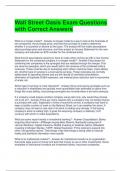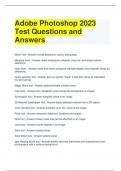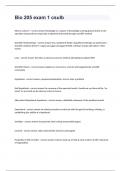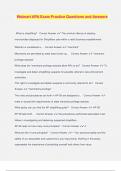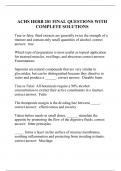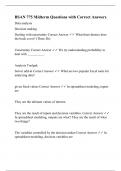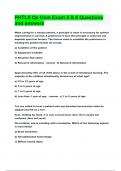Exam (elaborations)
Wall Street Oasis Exam Questions with Correct Answers
- Course
- Institution
Wall Street Oasis Exam Questions with Correct Answers What is a merger model? - Answer-A merger model is a way to look at the financials of two companies, the purchase price, and how the purchase is made to determine whether it is accretive or dilutive to the buyer. The analyst will first make as...
[Show more]
